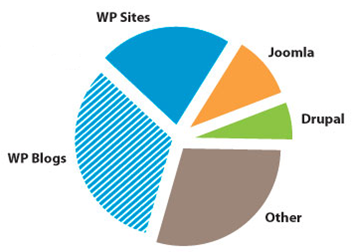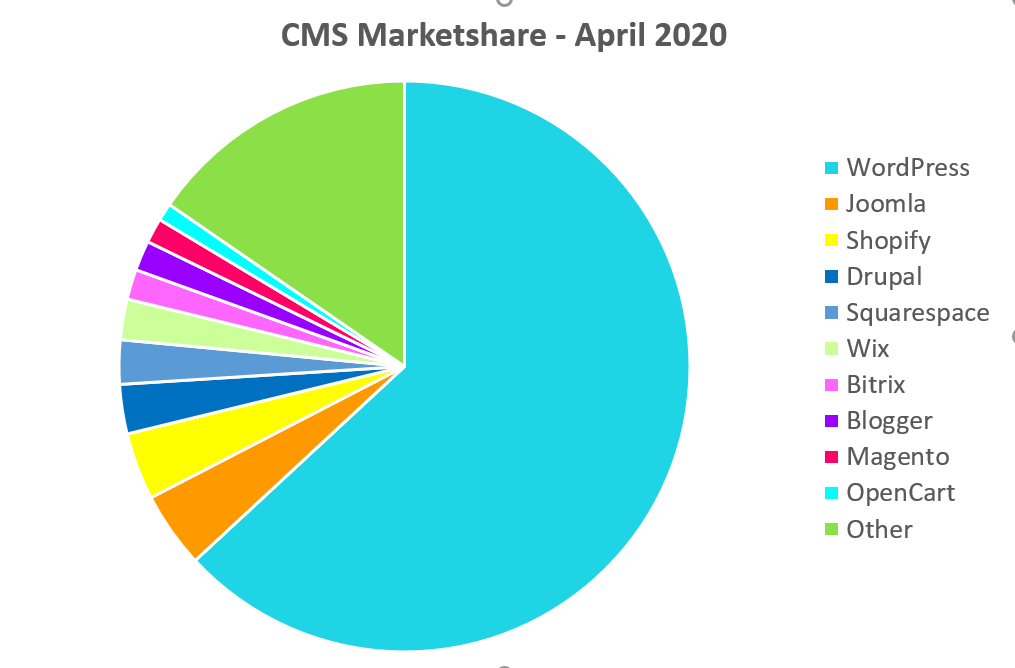Intro: WordPress and Content Management Systems
What is a Content Management System?
There are lots of ways to describe them but essentially a Content Management System — or CMS as they are commonly called — is a tool used to build and maintain a website that doesn’t require a high degree of technical skill. Or to put it more simply you do not need to know how to program to create a website. Now, programming skills can come in handy and you do need to be technically adept. But, with the CMS of today you can create a fairly complicated site with forms, eCommerce, users and complicated page layouts – without knowing how to code – or even HTML or CSS.
What is that? Basically a web application that makes it easier to build websites.
- Eliminates (mostly!) the need to know HTML, CSS and other techie skills such as JavaScript, PHP, and SQL. Though it can still be very helpful to know those to do behind the scenes work or customization.
- You can create websites more quickly this way and they are much, much easier to maintain.
- WordPress is the dominant open source CMS. Want to see what webites have been create in WordPress? Click here.
- Others CMS that are used include: Drupal, Joomla and then a bunch more…ModX, Craft, Perch, …and on and on…
Market Share
- Depending on the source, WordPress has anywhere from 40-65% of the market. What does that mean? That about half of all websites are built using WordPress. As of April 2020 – the estimates are at about 60%.
- Joomla and Drupal are traditional CMS like WordPress. They used to have about 10% of the market each five years ago – now Joomla is at about 4% and Drupal is at about 3%.
- Other CMS-lite tools have become popular with Shopify, Squarespace, Wix, Bitrix, BLogger and Magento each having about 2-3% of the market.
- If you learn WordPress, it will be easier to find work.
- If you build your website with WordPress, it will be easier to find people to maintain & fix it.
All well and good – but why is WordPress so popular?
 Focus: In the beginning, WordPress was designed to solve just one single problem – blogging. It wasn’t trying to be all things to all people and it started with just that.
Focus: In the beginning, WordPress was designed to solve just one single problem – blogging. It wasn’t trying to be all things to all people and it started with just that.- Ease of Use:
- Easiest to install, setup and start using. Especially the backend part!
- Committed to users
- Driven by content people not techies.
- The Blog factor: Since WordPress was originally designed for blogs, it is very easy to use to create websites that are blogs. Therefore, a huge percentage of simple blogs are create in WordPress. The chart to the right shows the breakout in WordPress sites.

